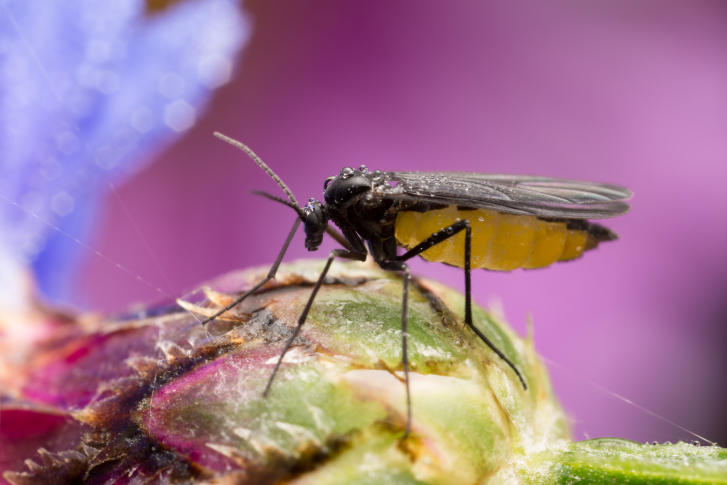Bug infestation? “Gnat” a chance.
Sometimes, tiny bugs can be major annoyance, and there’s no questions that fungus gnats fall into that category.
You many have seen them flying around computer screens, windows, or near other light sources, but they aren’t very good flyers. You may have confused them with fruit flies or even thought they were mosquitoes. Luckily these tiny invaders don’t bite people, but they feed on fungus, algae, and decaying organic matter. The larvae can eat the roots of plants and cause a lot of damage to seedlings, so amateur botanists: beware!

Fungus gnats tend to stay close to where they breed and feed. Inside your home, that almost always means they have taken up residence in one or more potted plants. One of the main reasons we see fungus gnats in our customers’ homes is that they are using outdoor potting soil for their indoor potted plants. the difference is that outdoor potting mix has wood mulch, which encourages fungal growth.
This isn’t much of a problem outdoors, but inside, you can wind up with a very annoying fungus gnat infestation on your hands. We also see this problem pretty frequently in the commercial properties we work on, because someone has brought in a potted plant with the wrong type of soil and contaminated the property with a gnat infestation.
“Gnat” in your house.
The number one way to prevent fungus gnats in the first place is to make sure that you use indoor, pasteurized potting soil for houseplants because it has been treated to remove larvae. But even plants in pasteurized soil can become contaminated with fungus gnat eggs if you bring them outside for the summer (fun fact: female fungus gnats can lay up to 200 eggs in their lifetime!), so keep an eye out for these minuscule pests.
When fungus gnat larve hatch, they look like tiny, clear worms with black heads and take about two weeks to grow into adult gnats. If you spot these tiny creatures, you can use an insecticide specifically designed to kill the larvae. If you already have an infestation of the adults, you can try placing sticky traps in the soil near the plants, since these pests trend to stay close to “home.”
You should also let the top inch of soil dry out before watering your indoor plants and make sure your houseplants have adequate drainage, because fungus gnat larvae can’t survive in a dry environment. Similarly, avoid over-watering your plants to prevent gnats.
Better yet, let Brody Brothers know if you’re dealing with a fungus gnat infestation and we’ll take care of it for you. No pest problem is too small for us, and we we know, even tiny fungus gnats can cause a big headache for our customers.

